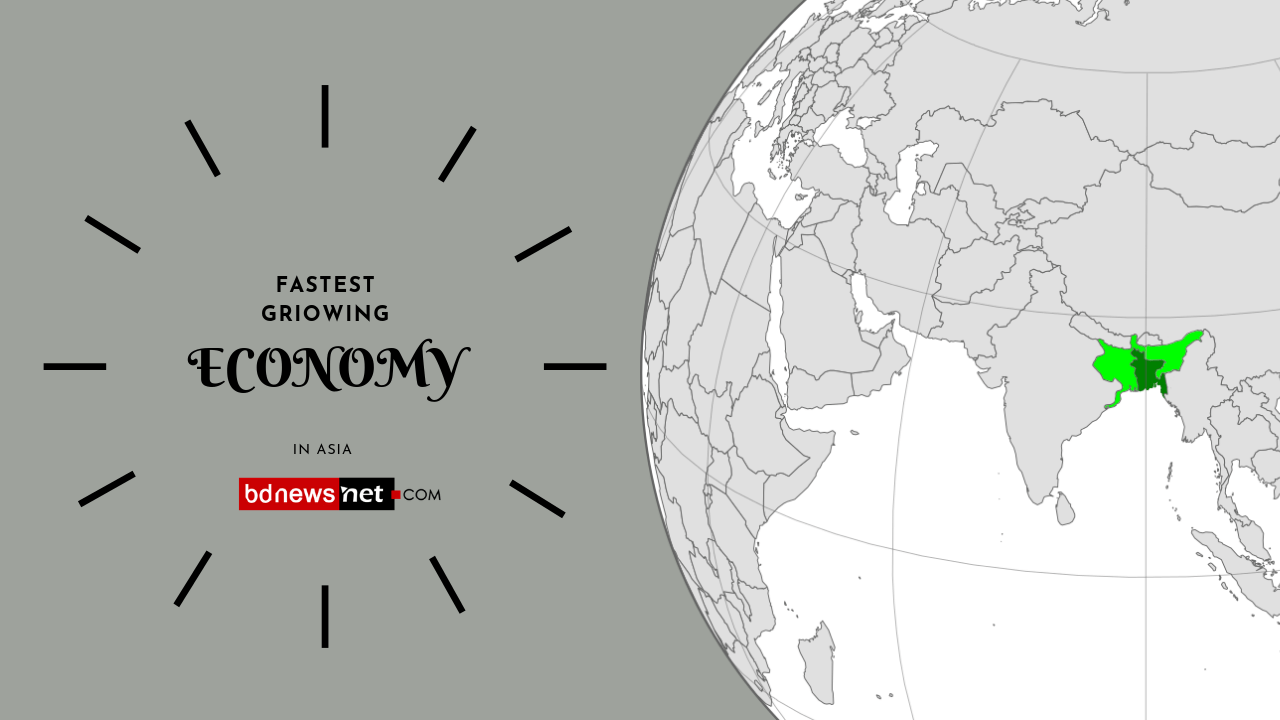Breaking News
Bangladesh: Top Growing economy in Asia – Asian Development Bank

Bangladesh expected to achieve 8.0% growth in 2019 and 2020. According to the Asian Development Bank report ( Asian Development Outlook 2019 ) ” Bangladesh will continue to be the fastest in the Asia Pacific”.
Bangladesh Growth Report 2019
Bangladesh Total GDP growth accelerated to 7.9% in the fiscal year 2018 from 7.3% in the previous year. Bangladesh Agriculture Sector grew by 4.2% , Industry grew by 12.1% on strong production in large and medium-sized industries and achieved self-sufficiency in food production. Investment increased from the equivalent of 30.5% of GDP in FY2017 to 31.2% in FY2018 as public investment rose from 7.4% of GDP to 8.0% and private investment increased slightly to 23.3%.
opportunities
Tariff tensions between the People’s Republic of China and the US make Bangladesh an attractive alternative source of manufactures. Consequently, the trade deficit will narrow as growth in exports outpaces imports. Private investment is expected to rise in Bangladesh, supported by measures to increase private sector credit, reform initiatives to improve the ease of doing business, and plans to make several hundred industrial plots available in special economic zones. On the supply side, further expansion in industry is expected to drive growth in FY2019 as export growth accelerates. Growth in agriculture is expected to moderate, considering the high base set last year
ADB’s Advice For Bangladesh
Banking
Better governance is required in the banking sector.Indications of weak governance are a high ratio of expenditure to income, high administrative and operating expenses, lendingwith scant appraisal, weak credit monitoring, a lack of integrity and compliance with applicable laws and regulations, and inefficient appointments in management . The authorities should ensure strict enforcement of existing bank rules and regulations. They might consider consolidation, merger, or divestment for SCBs, or even privatization to reduce their number. Alternatively, restructuring SCBs could be considered before divestment. The authorities could also consider establishing a national asset management company to take over NPLs from ailing banks
Revenue Collection
Budget revenue underperformed its target and declined from the equivalent of 10.2% of GDP in FY2017 to 9.6% with slower growth in value-added tax and supplementary duty collection at the import stage, while nontax revenue collection also underperformed. Government spending was lower than budgeted and declined marginally to the equivalent of 13.5% of GDP,
Account Deficit
Despite larger remittances, the current account deficit grew abruptly from $1.3 billion in FY2017 to $9.8 billion, equal to 3.6% of GDP, as the surge in imports doubled the trade deficit, and deficits in services and primary income widened
Export
Export growth surged from 1.7% in FY2017 to 6.4% as garment exports, accounting for over 80% of the total exports, recovered from only 0.2% growth in FY2017 to 8.8% on stronger demand in the euro area. Other exports declined by 7.0% on lower demand for a number of other manufactured products.
substantial progress in implementing large infrastructure projects, notably the Padma Bridge and Dhaka Metro Rail
The overall Growth of South Asia is expected to
edge up by 0.1 percentage point, from 6.7% in 2018 to 6.8% in 2019 and again
to 6.9% in 2020 . Inflation in South Asia was stable at 3.7% in 2018 with benign food inflation and despite higher global oil prices. Subregional inflation is expected rise to 4.7% in 2019 and 4.9% in 2020 under pressure from currency depreciation.
South Asia will remain the fastest-growing
subregion in the world, projected to grow by 6.8% in 2019
and 6.9% in 2020, led by Bangladesh at 8.0% in both years
